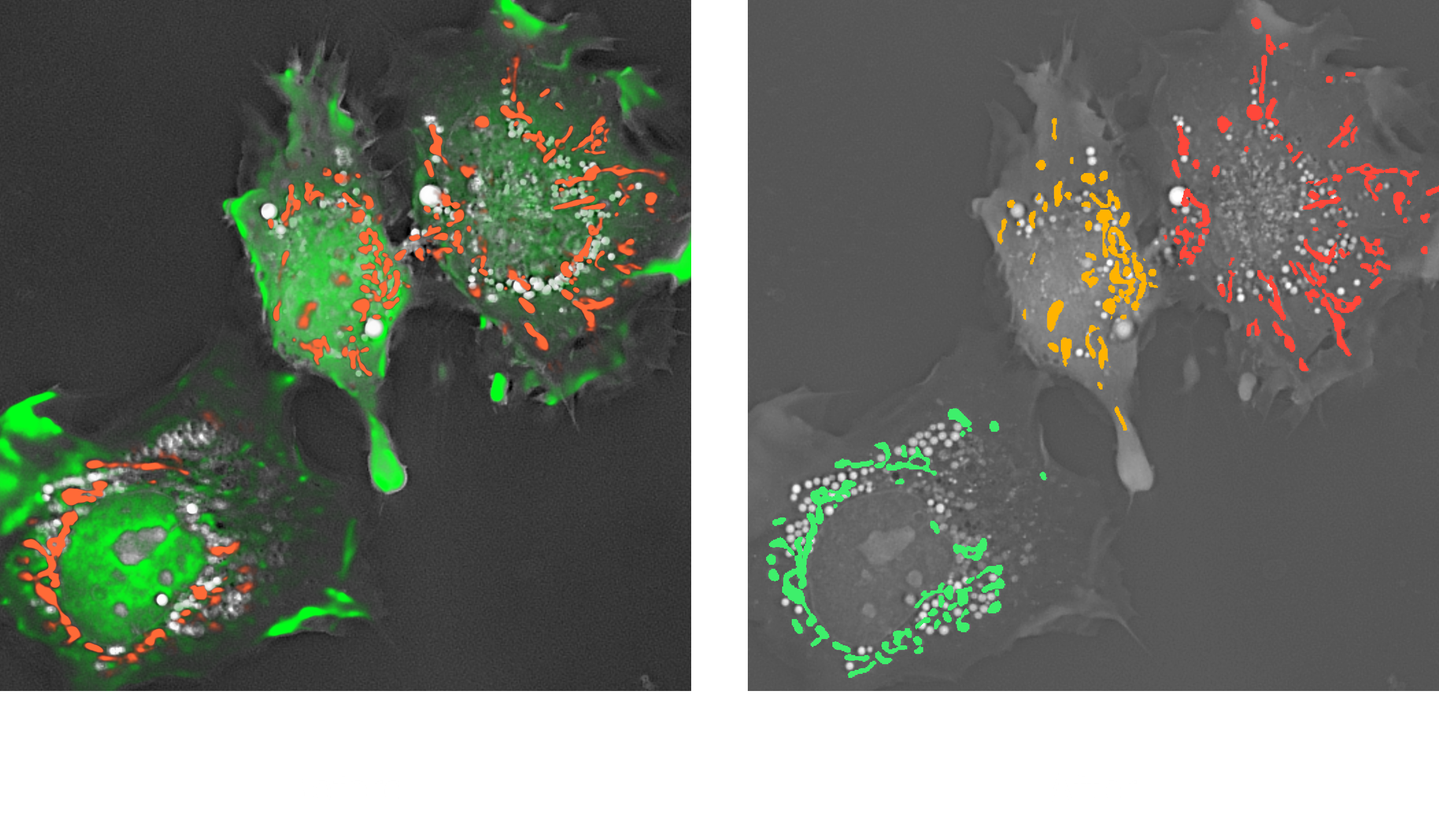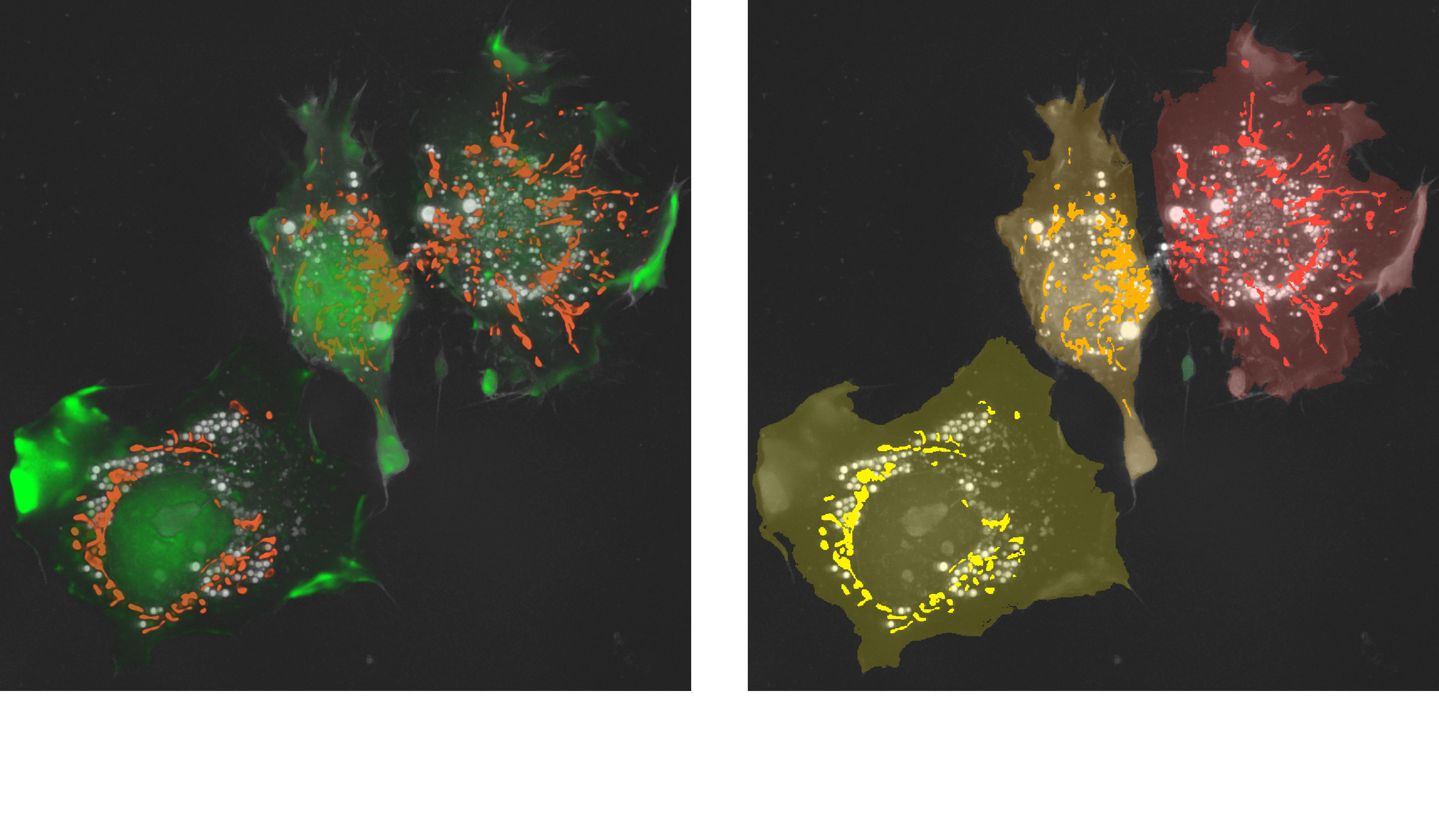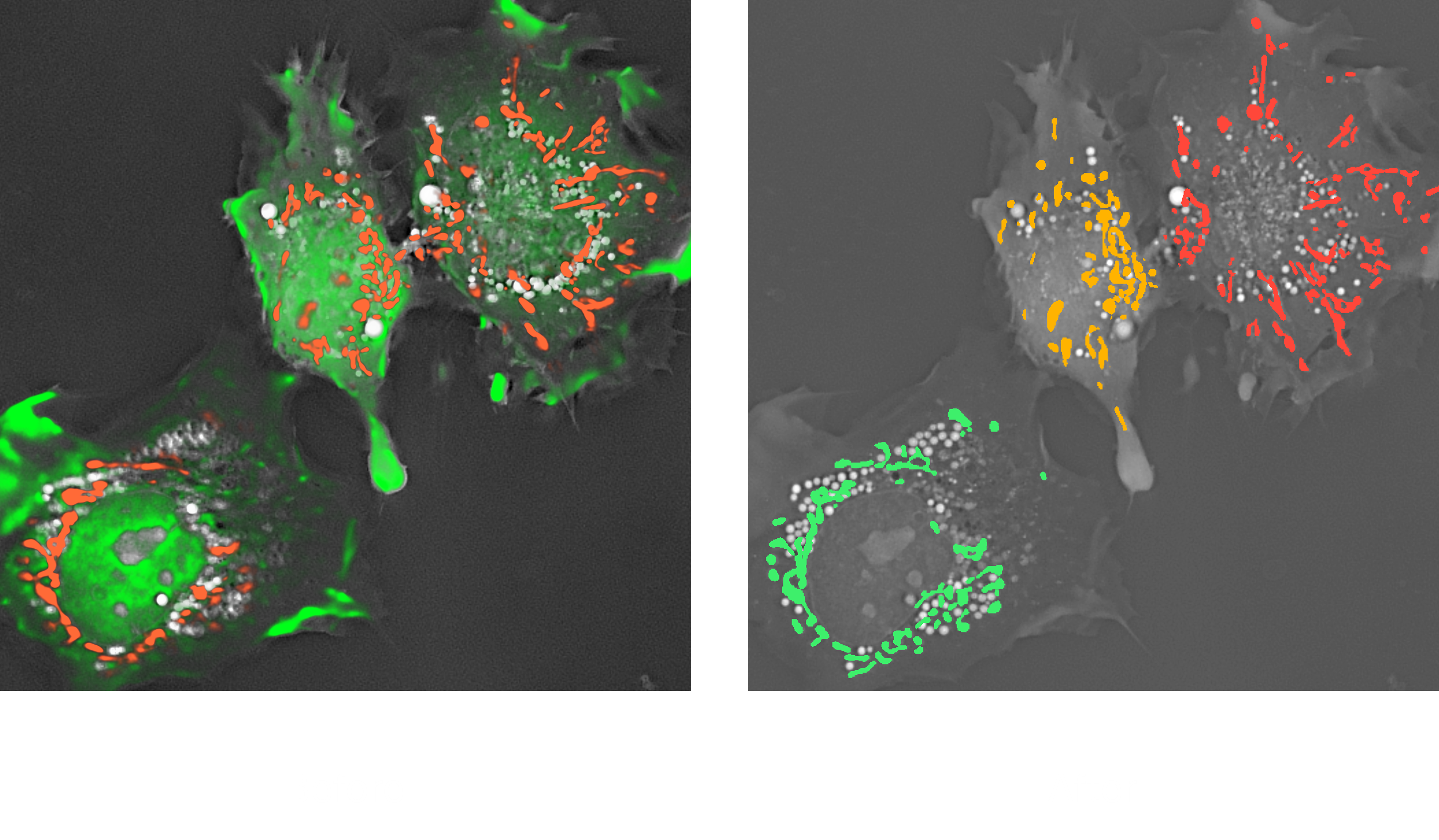Multi-channel FL Analysis
1. Pipeline: (3D) FL 2Ch Parent-Child Segmentation & HT Quantification
This pipeline performs segmentation using two fluorescence channels to analyze parent-child relationships between objects, such as nuclei and nucleoli. One channel is used to segment parent objects (e.g., nuclei), and the other to segment child objects (e.g., nucleoli). The spatial relationship between parent and child objects is then determined.
Following segmentation, the resulting masks are applied to holotomographic (HT) data to extract additional label-free measurements. This enables comprehensive analysis that combines fluorescence-based structure identification with HT-based quantification.
Output: Masks and instance labels for parent and child objects, Fluorescence-based and HT-based measurements for each object.

2. Pipeline: (2D) FL 2Ch Parent-Child Segmentation & HT Quantification
This pipeline uses two fluorescence channels in 2D projections to segment parent and child objects and analyze their spatial relationships. One channel is used to segment parent structures (e.g., nuclei), and the other to segment child structures (e.g., nucleoli). Based on these masks, parent-child assignments are established.
Quantitative measurements are then performed using holotomographic (HT) data, enabling analysis of both fluorescence-based and HT-based features for each object.
Output: Parent and child object masks with instance labels, Fluorescence-based and HT-based measurements for each object

3. Pipeline: (3D) FL 2Ch Parent-Child Segmentation & FL Quantification
This pipeline uses two fluorescence channels to segment parent and child objects and quantify their fluorescence-based properties. One channel is used to segment parent structures (e.g., nuclei), while the other is used to segment child structures (e.g., nucleoli). The spatial relationship between each parent and child object is identified to enable hierarchical analysis.
All measurements are performed using fluorescence data, including object count, volume, and intensity for both parent and child objects, as well as parent-child associations.
Output: Parent and child object masks with instance labels, Parent-child assignments, Fluorescence-based measurements for each object

4. Pipeline: (2D) FL 2Ch Parent-Child Segmentation & FL Quantification
This pipeline uses two fluorescence channels in 2D projections to segment parent and child objects and analyze their spatial relationships. One channel is used to segment parent structures (e.g., nuclei), and the other to segment child structures (e.g., nucleoli). The pipeline identifies parent-child assignments based on spatial overlap.
Fluorescence-based measurements such as count, area, and intensity are extracted for both parent and child objects, enabling hierarchical analysis of labeled structures.
Output: Parent and child object masks with instance labels, Fluorescence-based measurements for each object

Access to analysis pipelines is available upon request. Please send your inquiry to info@tomocube.com to explore the options best suited to your needs.